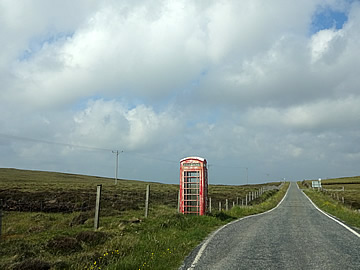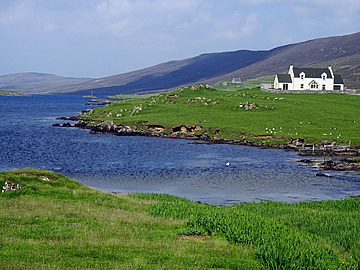

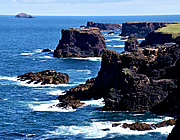
A spectacular walk at Eshaness and a fascinating, little-visited Neolithic site..
Shetland pages:
Sumburgh Head, Ness of Burgi, Jarlshof
Old Scatness, St Ninian's Isle, Mousa
Lerwick, Scalloway
Eshaness, Stanydale Temple
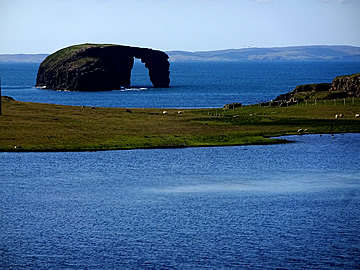
Eshaness is a peninsula in the far north west of Mainland, with breathtaking coastal scenery.
Dramatic, sheer cliffs and deep steep-sided gashes in the coastline called geos are battered by breaking waves. Cave systems burrow beneath the cliffs and lochs stud the surface - there is even a broch!
We set off on this spectacular walk on a glorious morning, heading north from the lighthouse along the coastal trail.
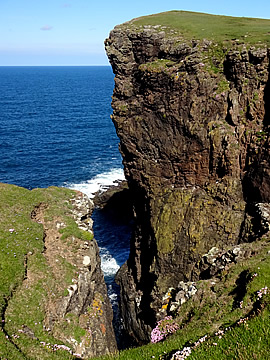
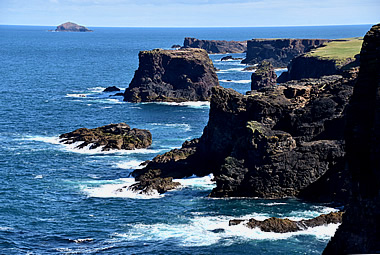
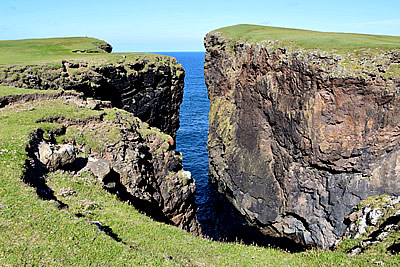
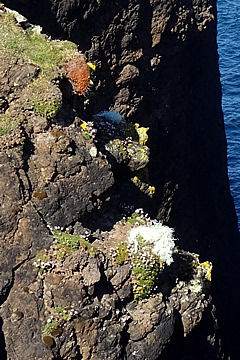
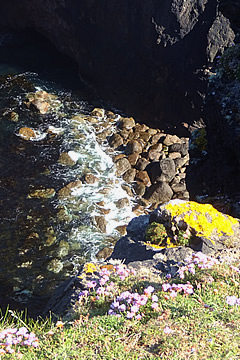
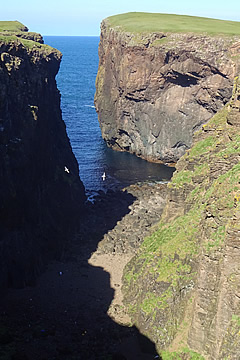
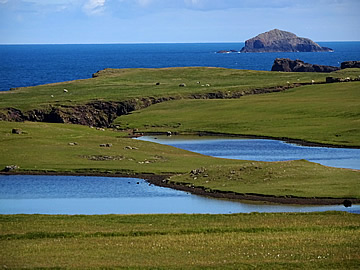
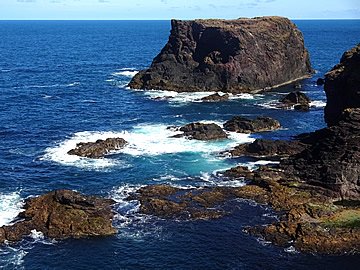
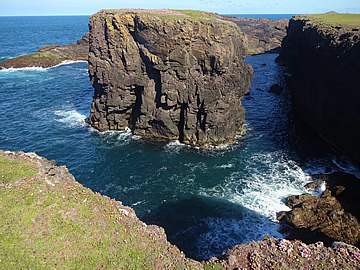
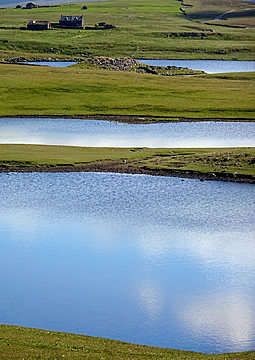
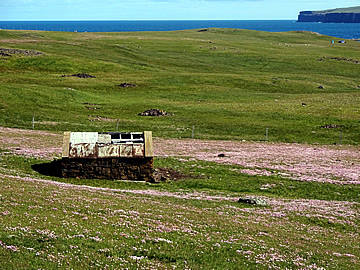
Around 360 million years ago volcanic activity created the rocks of Eshaness. Solidified lava flows are visible along this stretch of coast.
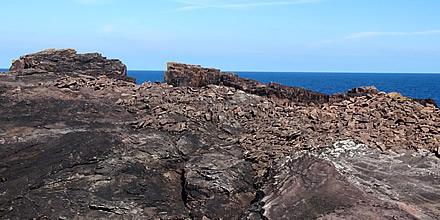
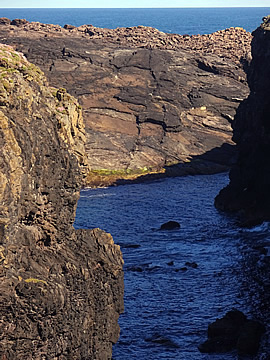
The Ignimbrite rock at Grind o' da Navir was formed by pyroclastic flows during a volcanic eruption, like those that buried Herculaneum in the famous eruption of Vesuvius in 79 AD.
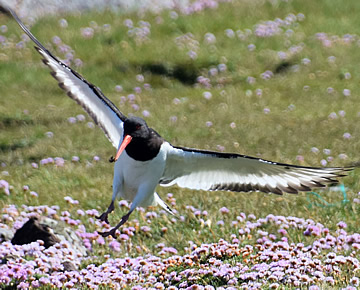
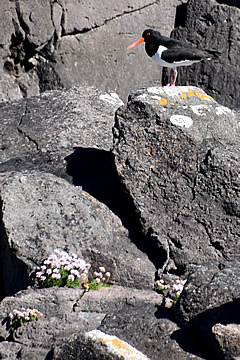
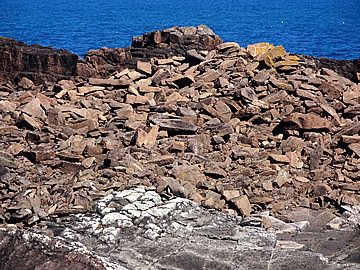
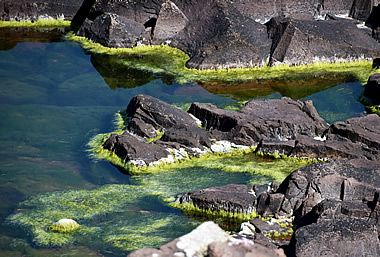
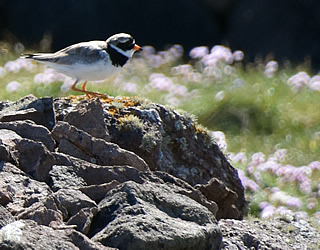
Plenty of birds around including the ubiquitous orange-beaked oystercatcher.
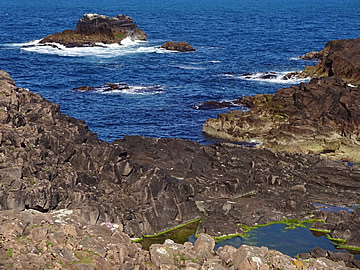
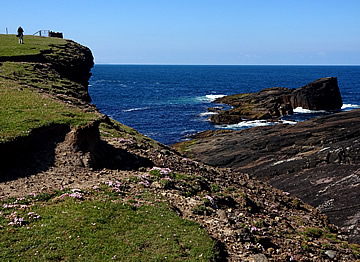
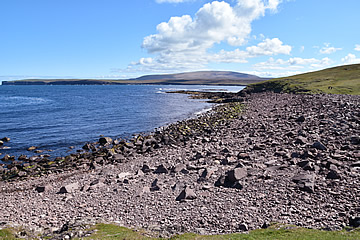
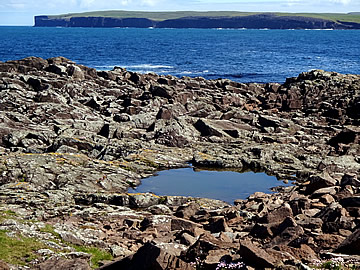
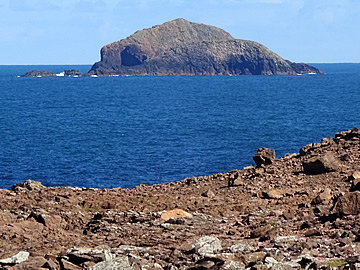
We walked to the northern edge of the Eshaness peninsula and the stony beach separating Croo Loch from the sea.
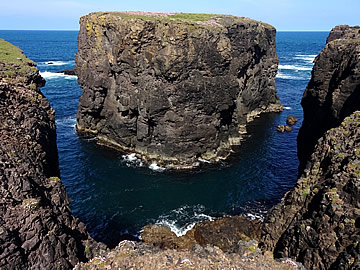
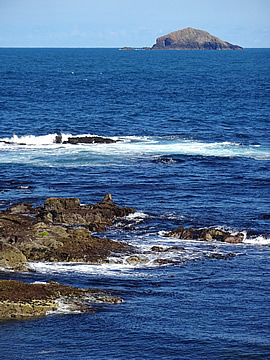
We returned via the Hols o' Scraada and the broch on the Loch of Houlland.
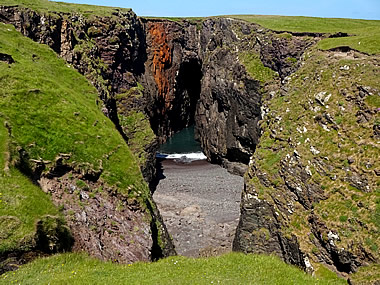
The Hols o' Scraada is a "gloup" - a collapsed sea cave, and very impressive it is too.
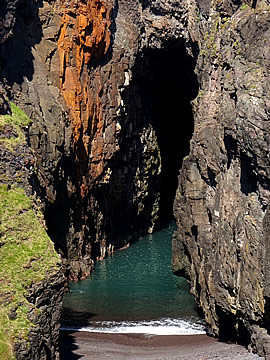
Following the course of a stream, with the remains of water mills, we came to the Loch of Houlland where the ruined broch stands on a small headland jutting out into the loch. Its double walls once stood 10m high.
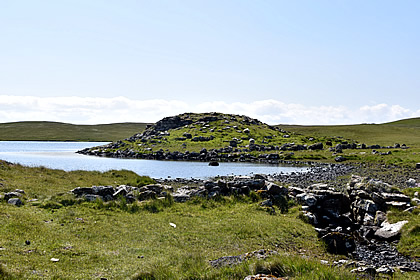
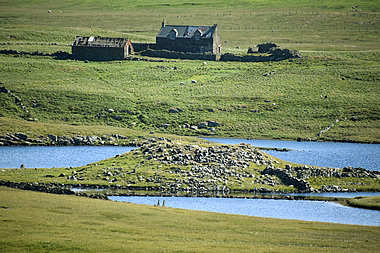
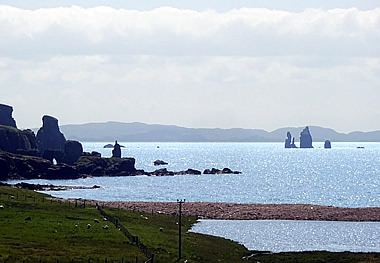
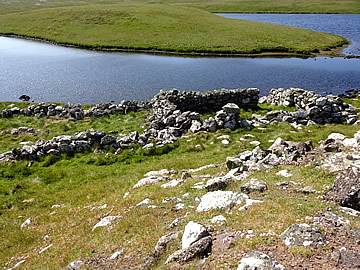
On the way back we stopped off at Frankie's "Britain's most northerly fish and chip shop". The fish and chips were excellent, the best we had on Shetland - there's not many we've had elsewhere that were as good either!
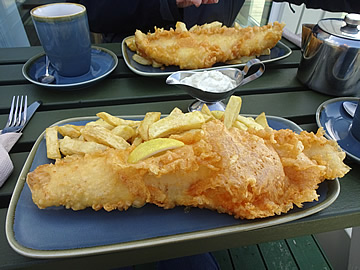

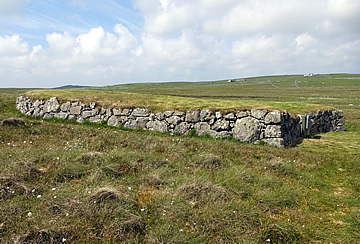
It's a short walk from roadside parking to this quietly impressive ruin of a chambered, heel-shaped building from the Neolithic.
Stanydale Temple on West Mainland is the largest Neolithic structure in the islands, measuring around 12 by 7 metre and with walls up to 5m thick. Pottery from 2500 BC and the Iron Age, around 2,000 years ago, was found here, suggesting a long period of use.
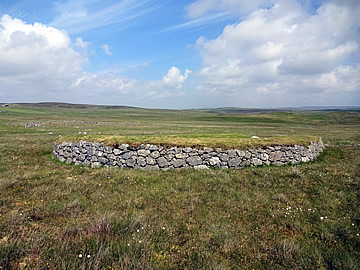
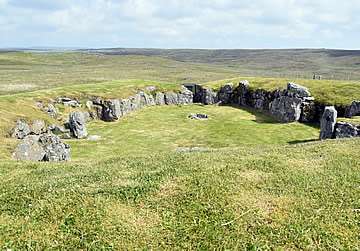
Inside, the building has six alcoves, and the three fire areas found in front of the alcoves showed repeated use. They were neither as large, nor as untidy, as domestic fires usually are, and it is speculated that they may have been used in rituals.

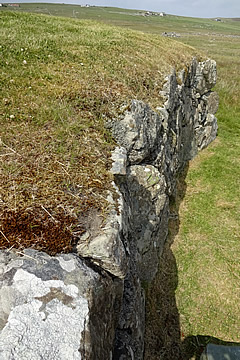
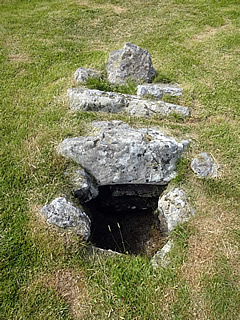
Two large post holes had been dug into the floor, these contained remnants of charred spruce. It seems that that two large spruce poles were lashed together and set in each post hole to support a substantial roof. Trees are scarce in Shetland, even 4000 years ago, and spruce is not native to either Scotland or Shetland, it was either imported or collected as driftwood.
The archaeological evidence thus points to this having been a very important building, perhaps a ceremonial hall. The interior chambers are reminiscent of chambered burial cairns, so it's also possible it was the final resting place for the members of a high-class family.
The building was central to a small settlement, a farming community of 3,000 - 2,000 BC, and there are remains of a few houses nearby as well as standing stones.

